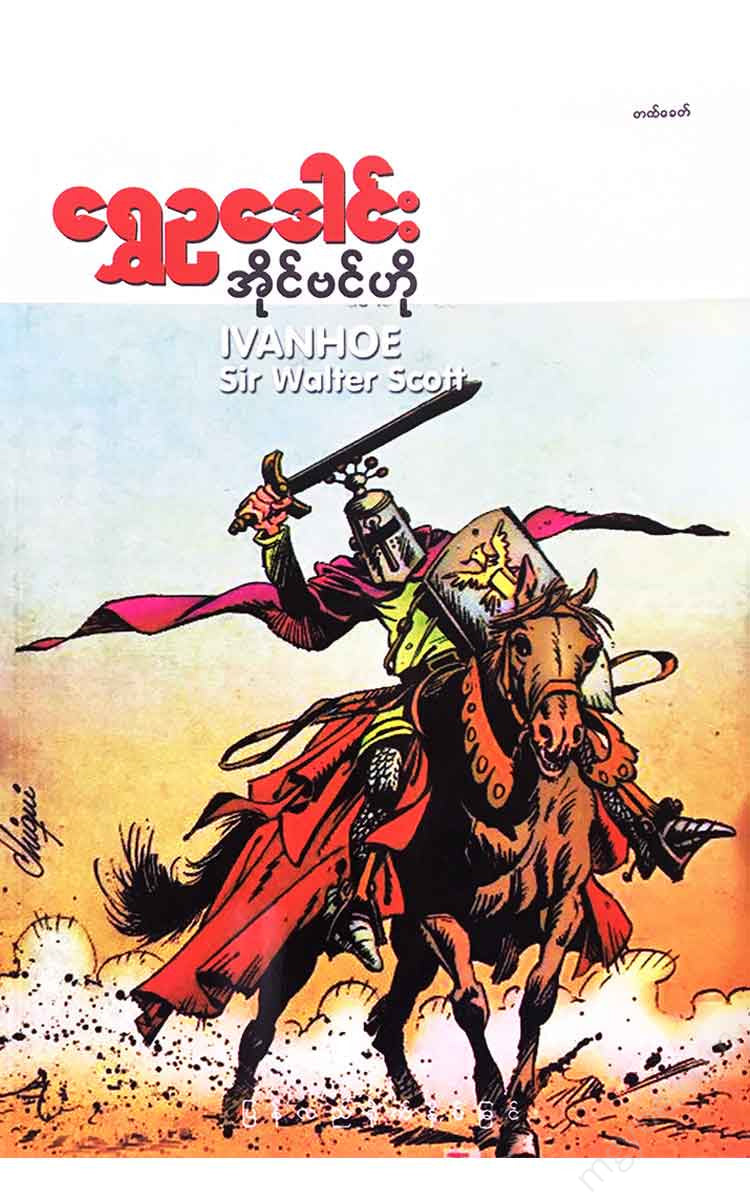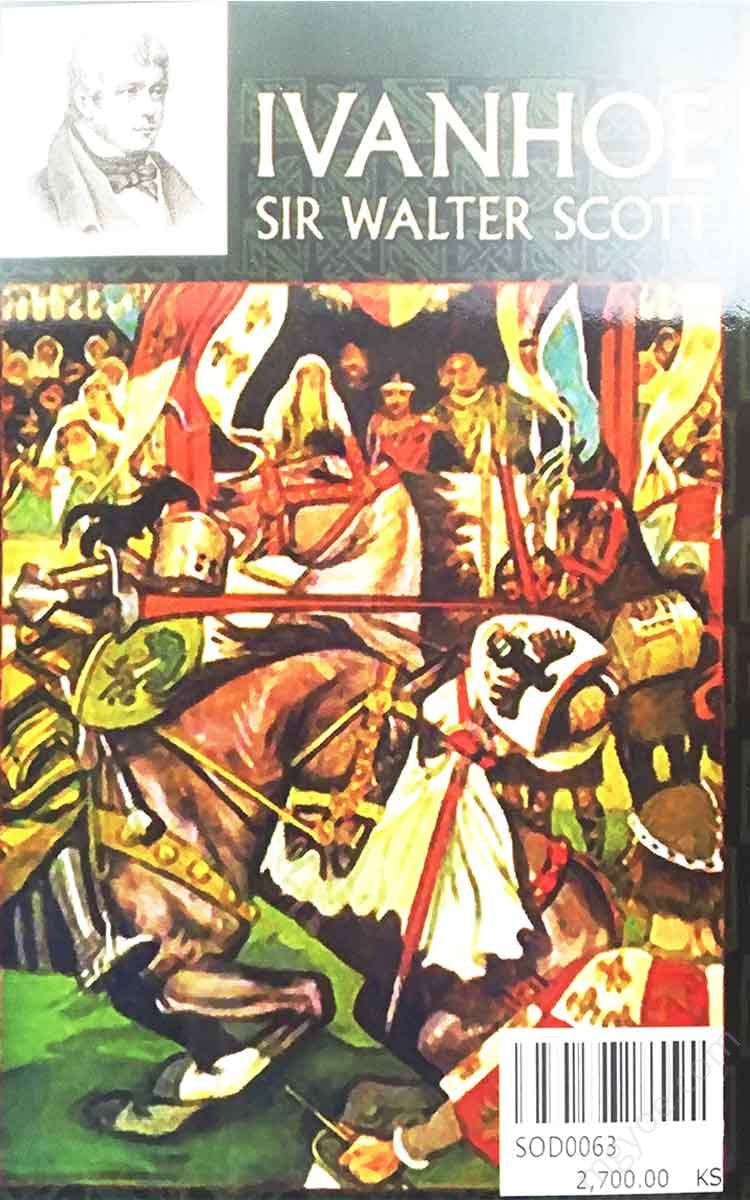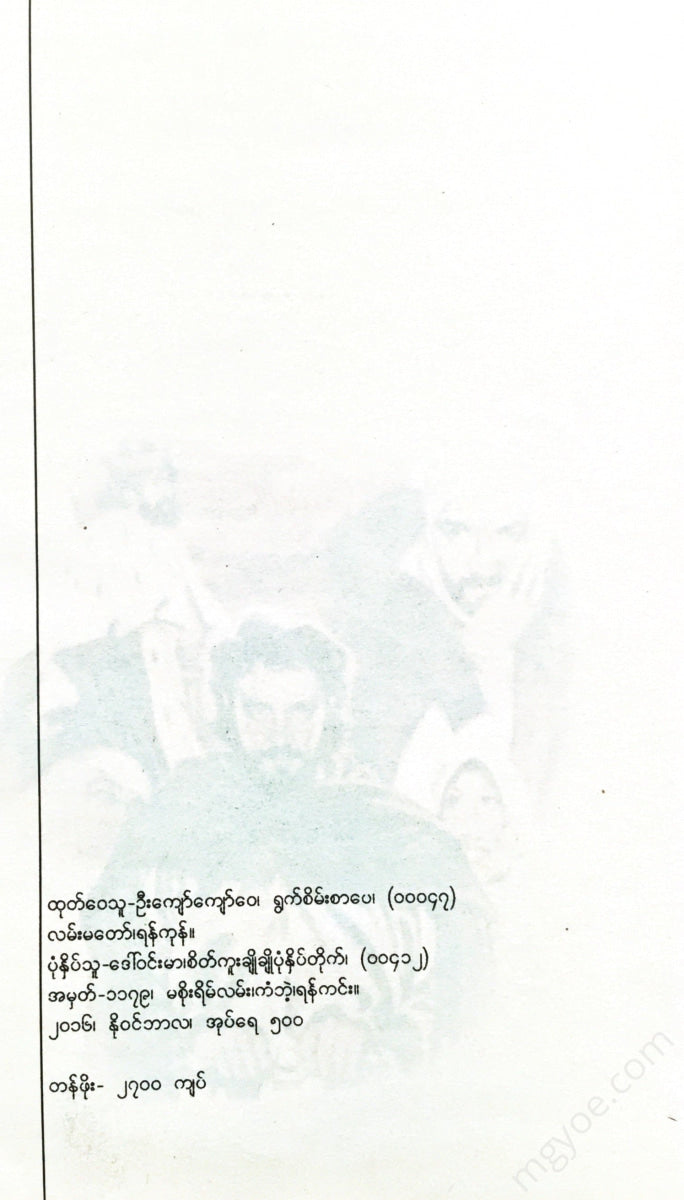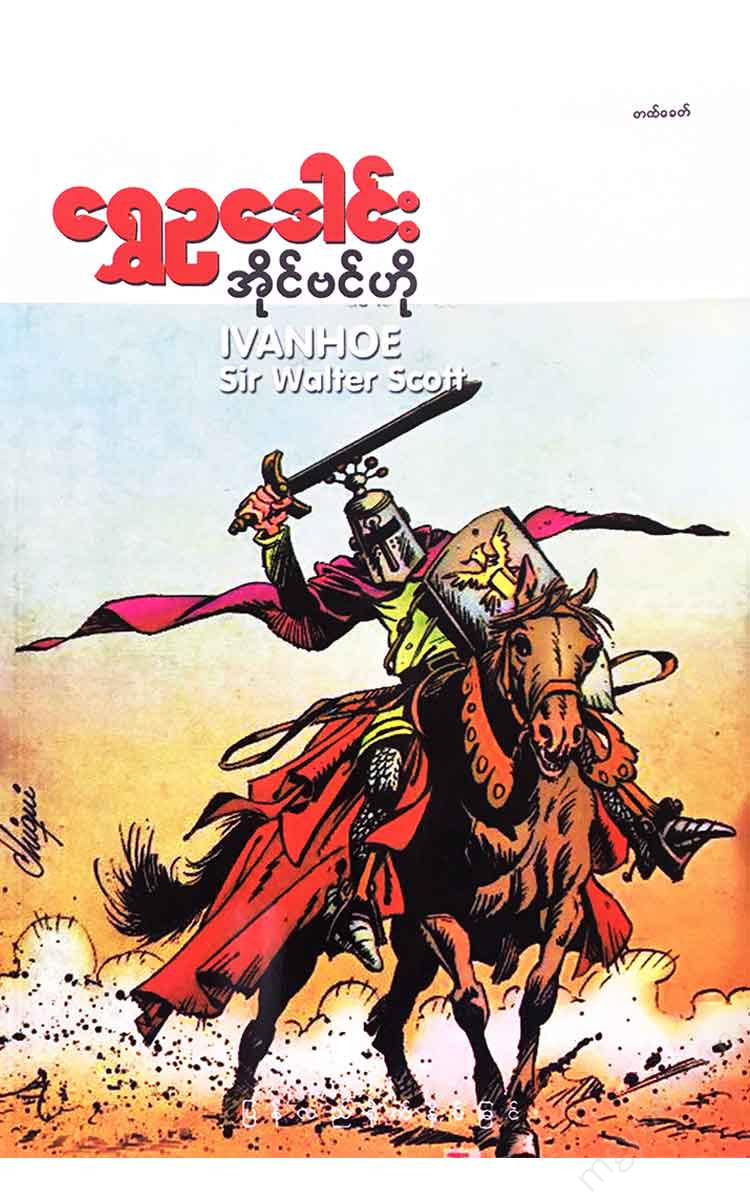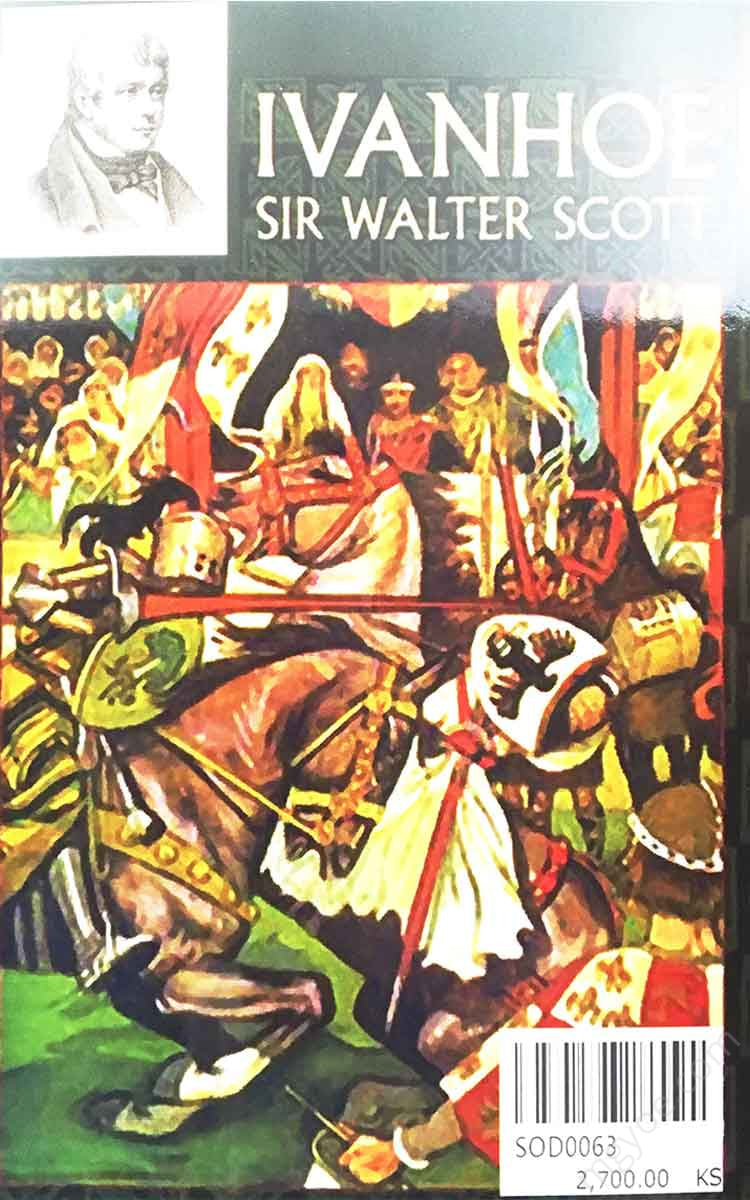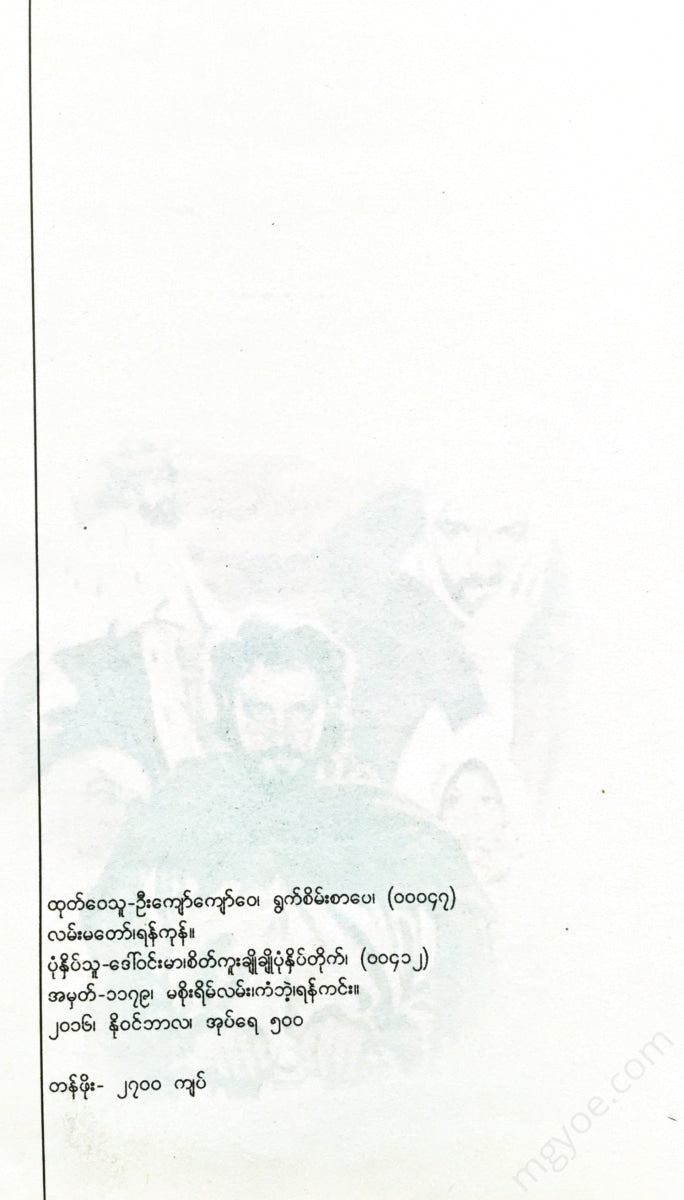စိတ်ကူးချိုချိုစာပေ
Golden Peacock - Ivanko
Golden Peacock - Ivanko
Couldn't load pickup availability
Chapter 1
The pig keeper and the clown
On the banks of the River Don, which flows through Yorkshire, England, there once stood a large forest, where many of the battles of the famous “War of the Roses” were fought. The forest was also a hideout for bandits who defied the king’s authority.
The events we are about to describe take place mostly in the forest, but the time was when Prince John, who is known in English history as a bad king, was reigning as king. At that time, the real king of England was Richard I. Richard, who had been a hero in the conquest of Palestine to reclaim the Holy Sepulchre from the Arabs (Muslims), fell into the hands of a German king, whose brother Prince John was ruling the country as king in his place. Richard was shipwrecked on his way back from Palestine to England and fell into the hands of an Austrian duke, who in turn sold him to the German king.
While the German king was imprisoning his enemy, King Richard, his brother Prince John was plotting to become king from a temporary position. At that time, King Parishvijaya was ruling in India.
At that time England was in great unrest. King Richard was more interested in war than in governing the country, and for many years before he came under the control of the German king, he had been wandering about Europe and Palestine, and had left the government of the country to the lords, who, as they were wont to do, had no king to restrain them, but they gathered more and more soldiers of their own, and built their castles more and more strongly. The people who settled in England were called Saxons. Finally, the Normans who settled in France were more skilled in the arts of war, in the construction of buildings, in the making of clothes, and in the cooking of food, and were proud of the Saxons, with whom they had originally been one people. In fact, the Sassoons also consider themselves to be somewhat inferior in cultural skills, but superior in physical strength.
After King William defeated King Henry I of England at the Battle of Hastings, he rewarded the Normans by granting the lands of the Saxon chieftains who had fought against him to Norman lords. The Norman lords built large stone forts on the lands they received and raised and raised Norman soldiers to guard them. The Norman soldiers were cruel to the native Saxons, and the Norman lords levied heavy taxes on the people living on their lands.
At the time of writing, the Normans and Saxons had been living together for over a hundred years, but the two peoples were still far from being in harmony. It was only during the reign of King Richard that both peoples were united and came to a state of harmony.
The sun was just beginning to set in the forest mentioned above, and the shadows of the great oaks were beginning to cover the green grass longer and longer. The oaks were so old that in ancient times the Roman emperor Julius Caesar's army had marched under them. At the time we are writing, two men were sitting on the bank of a small stream, talking.
The elder of the two had a stern face, and his clothes were such as were worn by that class at that time. His coat was made of the skin of a hairy beast, with the fur on the outside, and was sewn together tightly. It went down from the neck to the knees, with no openings for the head and hands. His legs were bound with leather bandages, and his feet were shod in rough leather shoes. Around his waist was a wide leather belt with a brass buckle. In the buckle he had a horn and a sword. In the horn he had a blow-hole, which he blew when he wanted to warn his flock. The sword was long and sharp, with serrations on both sides. The handle was made of deer antler. Although it is over 700 years old , the mark ``Shave'' was engraved on the blade.
The man's head was bare, but around his neck was a strange brass ring, like a dog's collar. The brass ring was not wide enough to be removed from the head, nor had it any buttons or anything like that, so that if it were to be removed it could only be removed by cutting it with a sickle. The Saxon inscription on the brass ring read, "Guthrie, son of Bowdoin, servant of Cedrus of Rutherford." The man sitting near the swineherd was about ten years younger, and was dressed in strange clothes. His shirt was a very bright blue, with rough patterns on it. He wore a long coat over his ordinary blue shirt, which was bright red and had yellow trim. On his hands were thin silver bracelets, and around his neck was a large silver ring, like the first man's, on which were engraved the words, "Wamba, son of Whittle, servant of Rutherford, Cedars."
This man wore leather shoes like the first man, but instead of leather straps around his legs like the first man, he wore leather leggings, one side of which was yellow and the other side was red. On his head he wore a hat with bells attached to it, which made a loud noise whenever his head moved. By looking at his attire and his face, which was always full of laughter, we could tell that he was a kind of “joker” who was often raised by officials. Rich landowners and nobles often raised comedians, and their duties included telling stories, telling jokes, singing songs, performing magic tricks, etc. Some comedians were amazingly skilled at playing instruments, singing, performing magic tricks, and telling stories, and they were always available to people, at any time, and at any place. They are allowed to make jokes and make jokes anywhere.
To add to the man's appearance and make him look more comical, he also had a large wooden sword attached to his belt.
The two men were not only different in their clothing, but also in their facial expressions and mannerisms.
Share
